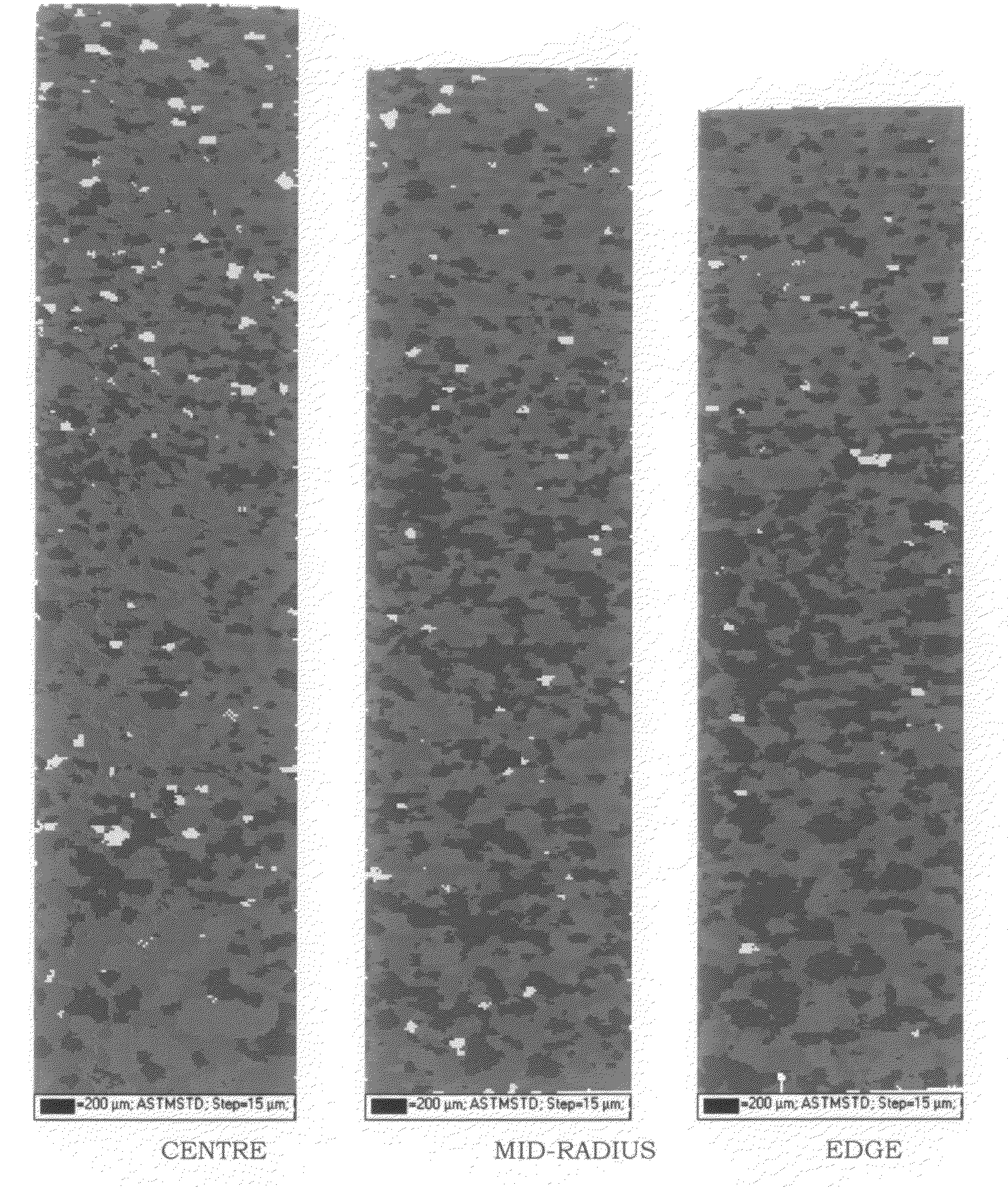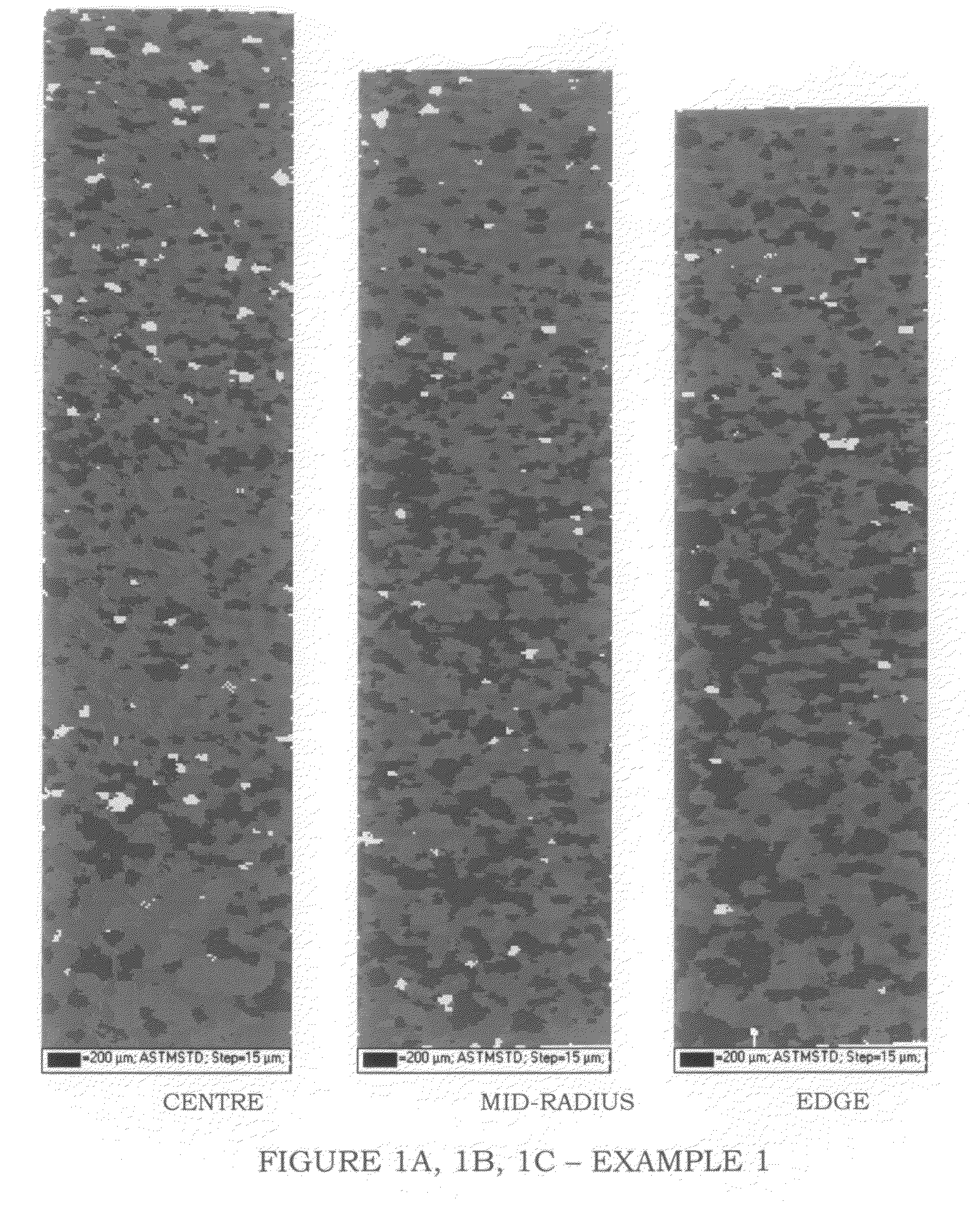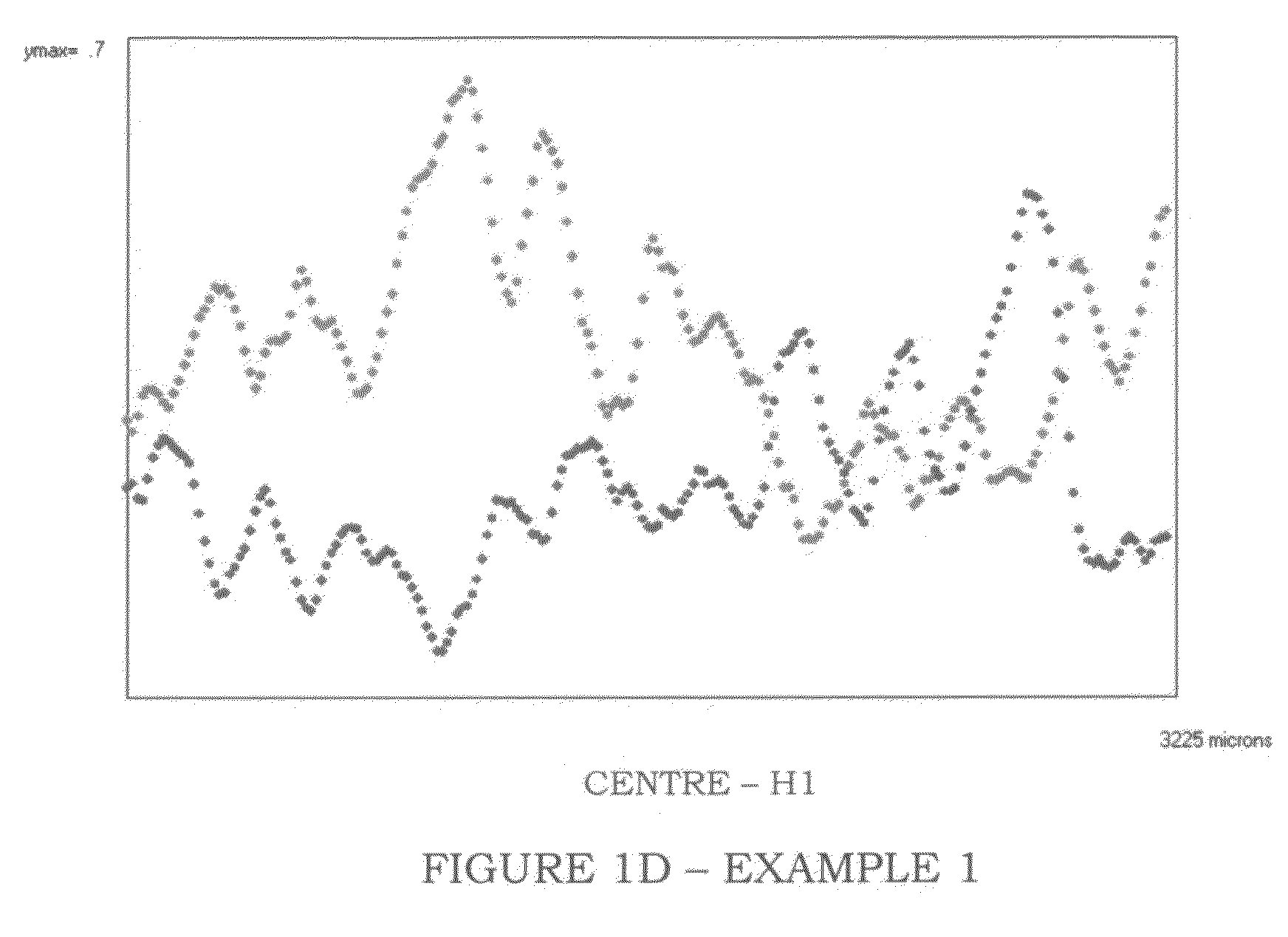Refractory metal plates with improved uniformity of texture
a technology of uniform thickness and refractory metal, applied in the field of refractory metal plates with improved uniformity, can solve the problems of inability to produce uniform thickness of films, inability to meet the requirements of the target, so as to improve the predictability and uniform thickness of films produced, and improve the ease of use effect of targets
- Summary
- Abstract
- Description
- Claims
- Application Information
AI Technical Summary
Benefits of technology
Problems solved by technology
Method used
Image
Examples
example 5 (
Inventive)
[0183]A plate 6 mm thick was made, using the ingot-metallurgy process outlined above, including the following process details:
[0184]1) Clean the surface of the ingot by machining. Cut the ingot (195 mm diameter) to length, 374 mm, resulting in a weight of 474 lbs.
[0185]2) Upset forge (U1) the billet to 65% of initial billet length
[0186]3) Anneal (A1) billet at 1370 C
[0187]4) Forge-back billet to 197 mm diameter (FB1)
[0188]5) Upset forge (U2) billet to 65% of initial billet length
[0189]6) Forge-back billet to 197 mm diameter (FB2)
[0190]7) Upset forge (U3) billet to 65% of initial billet length
[0191]8) Anneal (A2) billet at 1065 C
[0192]9) Forge-back the billet to 133 mm diameter (FB3). Clean the surface by machining, thus reducing the billet diameter to 127 mm
[0193]10) Cut the billet to length, 38.1 mm
[0194]11) Anneal (A3) billet at 1065 C
[0195]12) Roll to thickness. A 10-degree tilt angle was used. The thickness of the piece was reduced by approximately 5% in each pass. The...
example 6 (
Inventive)
[0207]A plate 7.5 mm thick was made, using the ingot-metallurgy process outlined above, including the following process details:
[0208]1) Clean the surface of the ingot by machining. Cut the ingot (195 mm diameter) to length, 374 mm, resulting in a weight of 474 lbs.
[0209]2) Upset forge (U1) the billet to 65% of initial billet length
[0210]3) Anneal (A1) billet at 1370° C.
[0211]4) Forge-back billet to 197 mm diameter (FB1)
[0212]5) Upset forge (U2) billet to 65% of initial billet length
[0213]6) Forge-back billet to 197 mm diameter (FB2)
[0214]7) Upset forge (U3) billet to 65% of initial billet length
[0215]8) Anneal (A2) billet at 1065° C.
[0216]9) Forge-back the billet to 133 mm diameter (FB3). Clean the surface by machining, thus reducing the billet diameter to 127 mm
[0217]10) Cut the billet to length, 63.5 mm
[0218]11) Anneal (A3) billet at 1065° C.
[0219]12) Roll to thickness. A 5-degree tilt angle was used. The thickness of the piece was reduced by approximately 5-10% in each...
example 7 (
Inventive)
[0223]A plate 7.5 mm thick was made, using the same powder-metallurgy process as was described above, (steps 1 to 6), resulting in a puck 165 mm diameter and 42 mm thick.
[0224]It was then rolled to thickness. A 5-degree tilt angle was used. The thickness of the piece was reduced by approximately 5-10% in each pass. The piece was rotated 45 degrees about a vertical axis after each pass. The piece was turned over after every 4 passes. The final thickness of the piece after rolling was 7.5 mm. The finish-processing (annealing etc.) was performed conventionally.
[0225]Samples were taken from the centre of the plate, the mid-radius of the plate and the edge of the plate, and the texture determined by EBSD, using a 15 μm step in both horizontal and vertical directions. The results are presented here (FIGS. 7A, 7B, 7C and 7D) in the same way as for Example 1, except that the width examined was 1.64 mm rather than 1.5 mm, and the graph shows area percentage from 0% to 60% rather th...
PUM
| Property | Measurement | Unit |
|---|---|---|
| Grain size | aaaaa | aaaaa |
| Grain size | aaaaa | aaaaa |
| Fraction | aaaaa | aaaaa |
Abstract
Description
Claims
Application Information
 Login to View More
Login to View More - R&D
- Intellectual Property
- Life Sciences
- Materials
- Tech Scout
- Unparalleled Data Quality
- Higher Quality Content
- 60% Fewer Hallucinations
Browse by: Latest US Patents, China's latest patents, Technical Efficacy Thesaurus, Application Domain, Technology Topic, Popular Technical Reports.
© 2025 PatSnap. All rights reserved.Legal|Privacy policy|Modern Slavery Act Transparency Statement|Sitemap|About US| Contact US: help@patsnap.com



